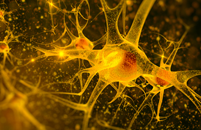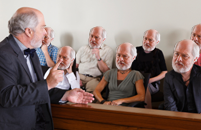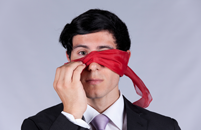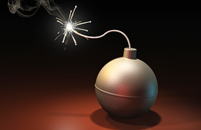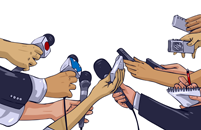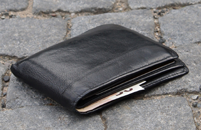Articles by Category
Articles by Issue
Recent Comments
- Stephen Brodsky on Harming Children: Uncovering and Overcoming Bias When Defending Sex Crimes Against Children
- Laura on Courtroom Attire: Ensuring Witness Attire Makes the Right Statement
- Members selection — Court-Martial Trial Practice Blog — February 22, 2014 on Why Do We Ask Jurors To Promise That They Will Do the Impossible?
- Video: Pryor Greed and Lawyers | Parents Rights Blog on Ethical Issues in Racial Profiling
- On the relationship between ideological and demographic diversity on Inaccuracy in Political Self-Perception: Young Adults Are Not as Conservative as They Believe
- Taylor Bishop on Tips for Preparing the Expert Witness
- Thanks for stopping by…. « The Jury Room on Book Review- Social Media as Evidence: Cases, Practice Pointers, and Techniques
- Thanks for stopping by…. « The Jury Room on Book Review: The Juror Factor: Race and Gender in America’s Civil Courts
Communication Archive
-
If It Feels Bad to Me, It’s Wrong for You: The Role of Emotions in Evaluating Harmful Acts
by Ivar Hannikainen, Ph.D. and Ryan Miller and Fiery Cushman, Ph.D.Posted on August 20, 2014 | No CommentsAuthored by Ivar Hannikainen, Ryan Miller and Fiery Cushman with responses from Ken Broda-Bahm and Alison Bennett, this article has a lesson for us all. It isn’t what that terrible, awful defendant did that makes me want to punish, it’s how I think I would feel if I did that sort of terrible, horrible awful thing. That’s what makes me want to punish you. It’s an interesting perspective when we consider what makes jurors determine lesser or greater punishment. -
Neuroimagery and the Jury
by Jillian M. Ware and Jessica L. Jones and N.J. Schweitzer, Ph.D.Posted on August 20, 2014 | 2 CommentsAuthored by Jillian M. Ware, Jessica L. Jones, and Nick Schweitzer with responses from Ekaterina Pivovarova and Stanley L. Brodsky, Adam Shniderman, and Ron Bullis. Remember how fearful everyone was about the CSI Effect when the research on the ‘pretty pictures’ of neuroimagery came out? In the past few years, several pieces of research have sought to replicate and extend the early findings. These studies, however, failed to find support for the idea that neuroimages unduly influence jurors. This overview catches us up on the literature with provocative ideas as to where neurolaw is now. -
Predicting Jurors’ Verdict Preference from Behavioral Mimicry
by Matthew Groebe, Ph.D. and Garold Stasser, Ph.D. and Kevin-Khristián Cosgriff-Hernandez, M.A.Posted on August 20, 2014 | 13 CommentsAuthored by Matthew Groebe, Garold Stasser, and Kevin-Khristián Cosgriff-Hernandez, this paper gives insight into how jurors may be leaning in support of one side or the other at various points during the trial. This is a project completed using data from actual mock trials (and not the ubiquitous undergraduate). -
The Ubiquitous Practice of “Prehabilitation” Leads Prospective Jurors to Conceal Their Biases
by Mykol C. Hamilton, Ph.D. and Emily Lindon, B.S. and Madeline Pitt, B.S. and Emily K. Robbins, B.S.Posted on August 20, 2014 | 13 CommentsAuthored by Mykol C. Hamilton, Emily Lindon, Madeline Pitt, and Emily K. Robbins, with responses from Charli Morris and Diane Wiley, this article looks at how to not “prehabilitate” your jurors and offers ideas about alternate ways of asking the question rather than the tired, old “can you be fair and unbiased?”. -
Women as Expert Witnesses
by Michelle A. Jones, M.A., J.D. and Tess M.S. Neal, Ph.D.Posted on May 7, 2014 | 5 CommentsHere's an update on how women expert witnesses fare compared to male expert witnesses. Some good news. Some not so good news. Make sure your knowledge is current. -
A (Short) Primer on Lesbian, Gay, Bisexual, Transgender, and Queer (LGBTQ) Culture in America
by Alexis Forbes, PhDPosted on February 6, 2014 | 2 CommentsWhat you need to know about LGBTQ culture and up-to-date language. -
Metaphors and the Minds of Jurors: Practical Applications for Trial Attorneys and Consultants
by Ronald K. Bullis, Ph.D., J.D., L.P.C.Posted on February 6, 2014 | 10 CommentsMetaphors are a powerful form of communication. Use them effectively and thoughtfully in trial. -
Jury Expert Top Ten Accessed Articles for 2013
by Editorial StaffPosted on February 6, 2014 | 2 CommentsTop 10 articles determined by our readers in 2013! -
Neutralizing Negative Pretrial Publicity: A Multi-Part Strategy
by Adam B. Shniderman, M.A.Posted on November 5, 2013 | 7 CommentsNeutralizing negative pretrial publicity…before trial, in voir dire, and during trial. -
When Does a Defendant’s Impulsivity Exculpate vs Incriminate?
by Clayton R. Critcher, Ph.D. and Yoel Inbar, Ph.D.Posted on November 5, 2013 | 1 CommentHow fast did your client make that decision? What assumptions will therefore be made as to their (moral) character?

